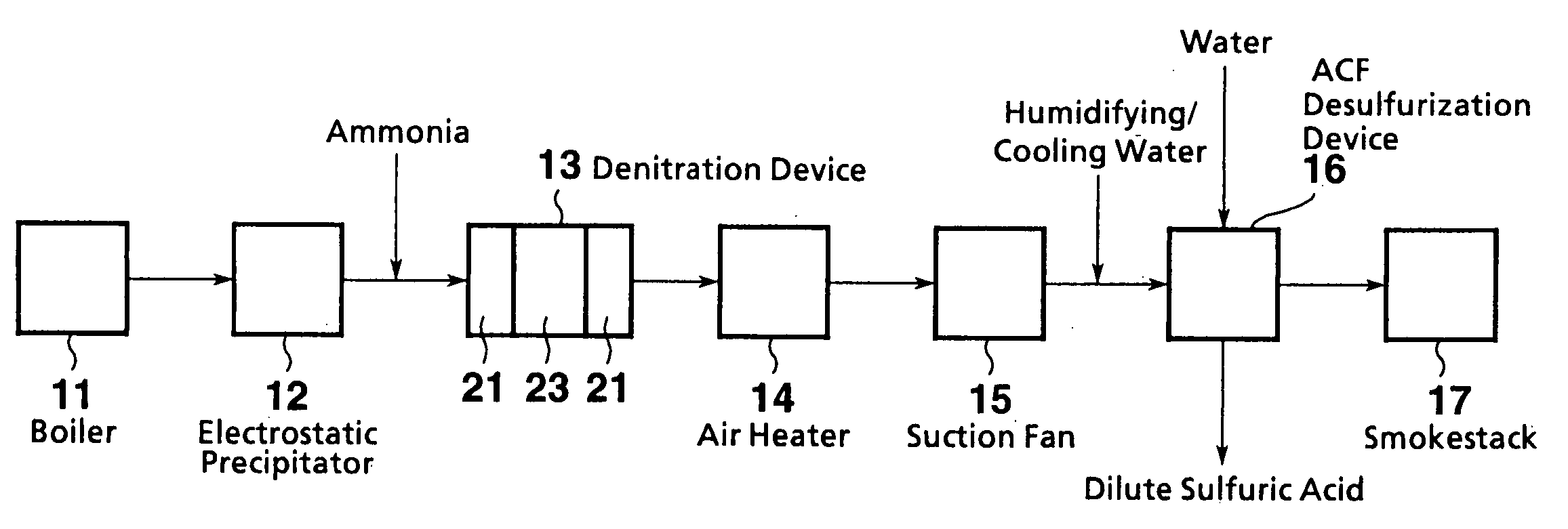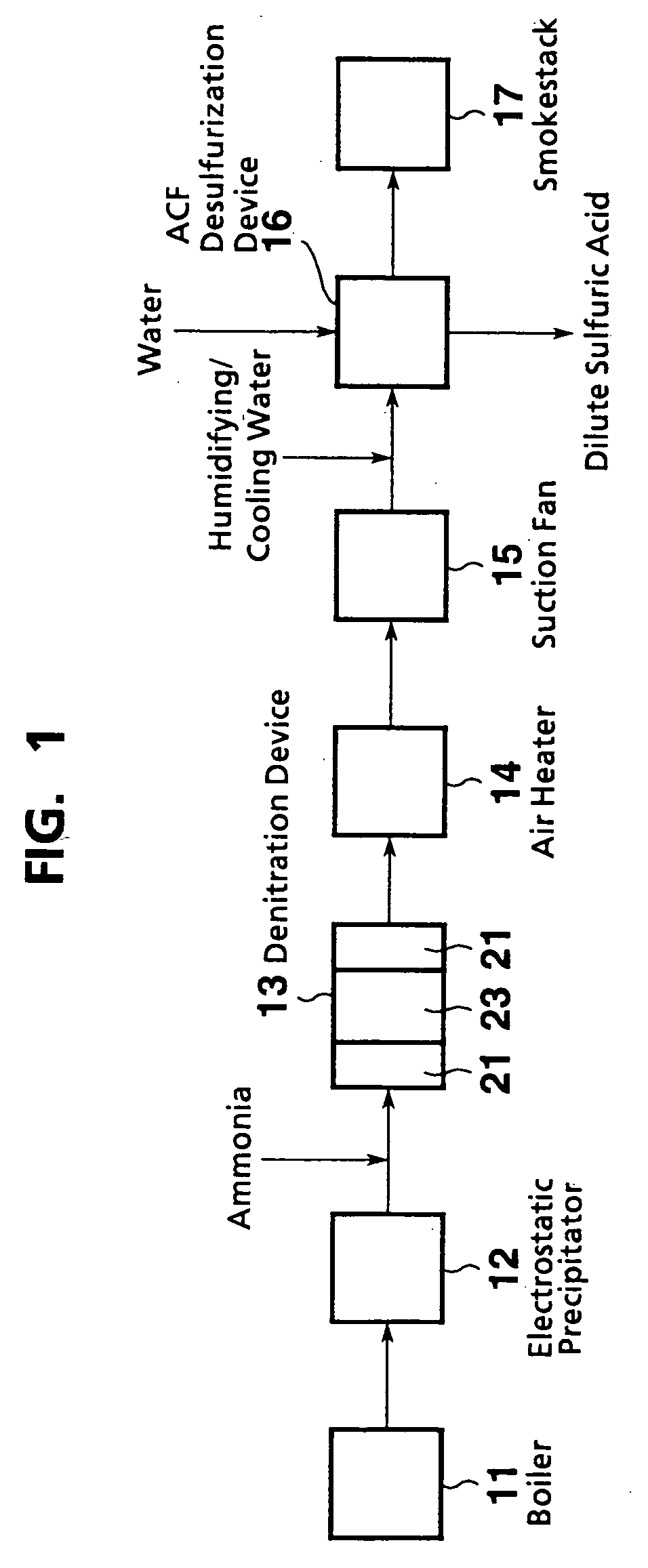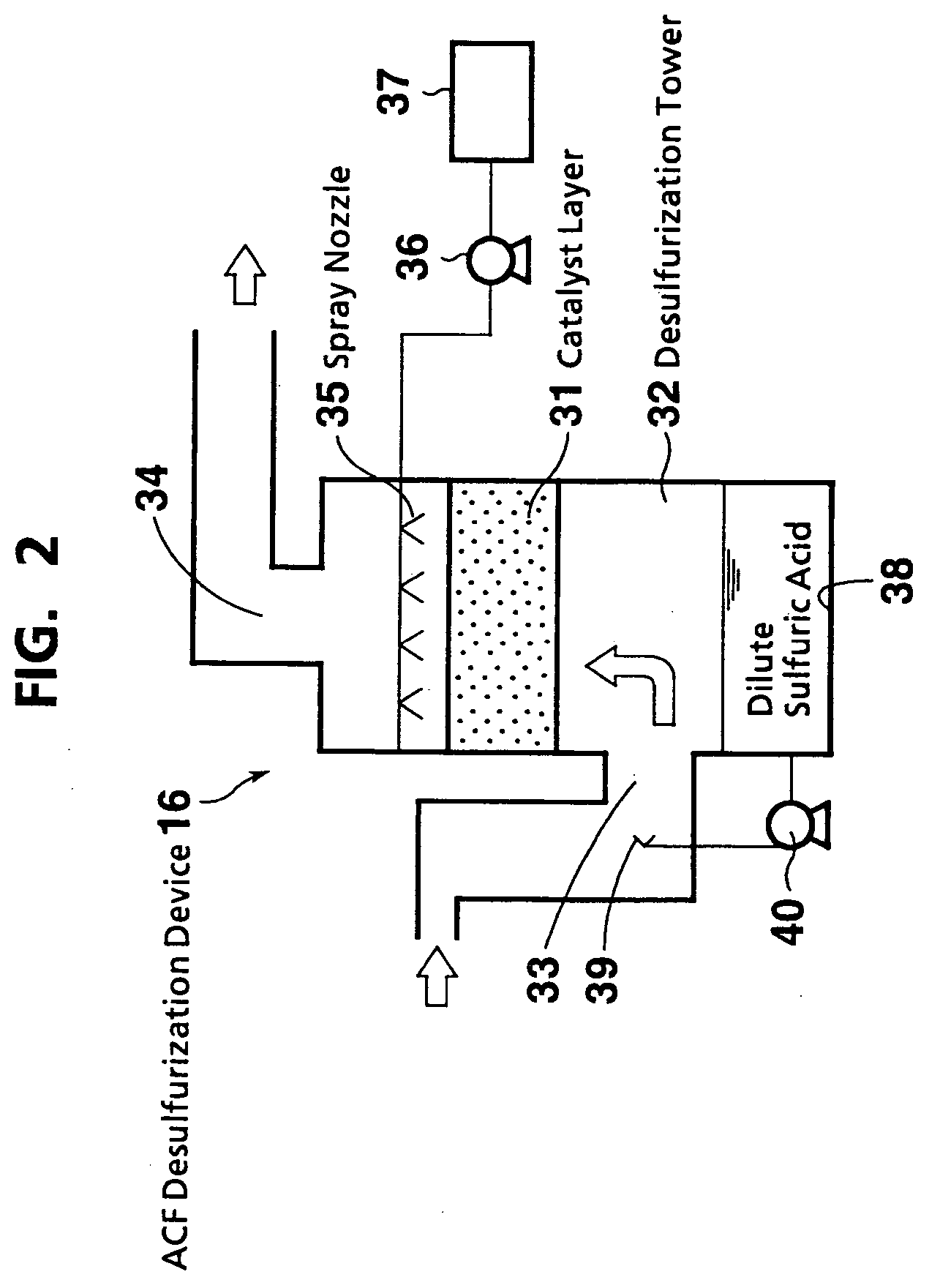Exhaust gas treatment system
a technology of exhaust gas treatment and exhaust gas, which is applied in the direction of separation processes, machines/engines, mechanical equipment, etc., can solve the problems of increasing the cost of treatment, inability to attract and remove dust in sufficient quantities, and not removing all of sulfur trioxide in the exhaust gas by dry electrostatic precipitator
- Summary
- Abstract
- Description
- Claims
- Application Information
AI Technical Summary
Benefits of technology
Problems solved by technology
Method used
Image
Examples
Embodiment Construction
[0022] An embodiment of the present invention will now be described in detail with reference to the accompanying drawings.
[0023]FIG. 1 schematically shows the configuration of an exhaust gas treatment system according to an embodiment of the present invention. FIG. 2 schematically shows an ACF desulfurization device.
[0024] The exhaust gas treatment system of the present embodiment is used in a boiler plant (baking furnace, incinerator, etc.) which uses a fuel containing high sulfur components such as petroleum coke and Orimulsion.
[0025] As shown in FIG. 1, the exhaust gas treatment system of the present embodiment is composed of a high temperature dry electrostatic precipitator 12, a denitration device 13, an air heater 14, a suction fan 15, an ACF desulfurization device 16, and a smokestack 17 arranged successively with respect to an exhaust gas discharged from a boiler 11.
[0026] The exhaust gas at about 200 to 400° C. is supplied from the boiler 11 to the electrostatic precipi...
PUM
| Property | Measurement | Unit |
|---|---|---|
| temperature | aaaaa | aaaaa |
| temperature | aaaaa | aaaaa |
| temperature | aaaaa | aaaaa |
Abstract
Description
Claims
Application Information
 Login to View More
Login to View More - R&D
- Intellectual Property
- Life Sciences
- Materials
- Tech Scout
- Unparalleled Data Quality
- Higher Quality Content
- 60% Fewer Hallucinations
Browse by: Latest US Patents, China's latest patents, Technical Efficacy Thesaurus, Application Domain, Technology Topic, Popular Technical Reports.
© 2025 PatSnap. All rights reserved.Legal|Privacy policy|Modern Slavery Act Transparency Statement|Sitemap|About US| Contact US: help@patsnap.com



